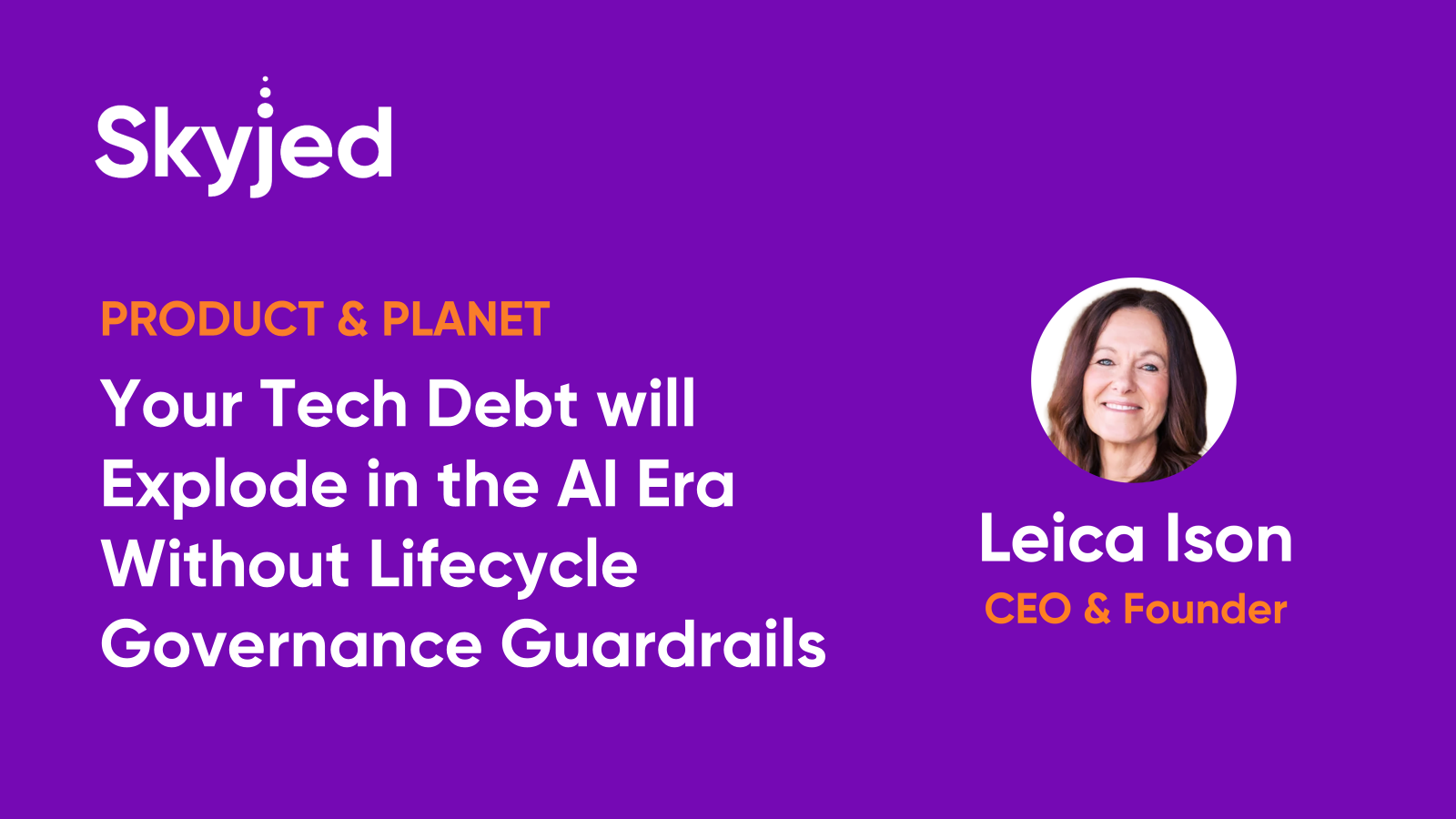Your Tech Debt will Explode in the AI Era Without Lifecycle Governance Guardrails
by Helen Tsaganos

Are you betting big on AI this year? Everyone is doing AI right now..
But here's the uncomfortable truth many boardrooms aren't discussing: without robust lifecycle governance, your AI investments are like rockets without guidance systems – powerful, expensive, and potentially catastrophic when they veer off course.
The Gold Rush Mentality
I've been watching companies rush to implement AI solutions with the same passion as the California gold rush. Everyone wants to stake their claim in this new territory.
"We need AI yesterday!" has become the rallying cry in executive meetings across industries. I get it – the pressure to transform is immense. The potential gains are compelling. The FOMO is real.
But as a tech veteran who's seen cycles of innovation come and go, I'm concerned about what's being overlooked in the sprint to deployment.
The Hidden Costs of Ungoverned AI
When we implement AI projects without lifecycle governance, we're essentially building our future on quicksand. Here's what's at stake:
Regulatory backlash. Regulators worldwide are rapidly closing the gap between innovation and oversight. The EU AI Act is just the beginning. When your AI systems arent reviewed and fail compliance checks, the costs go far beyond fines – they include emergency remediation, operational disruption, and reputational damage.
Technical debt. Each ungoverned AI system becomes a black box of compounding complexity. What seems manageable today becomes tomorrow's legacy nightmare that nobody wants to touch.
Trust erosion. When AI makes questionable decisions that affect customers or employees, and you can't explain why – that trust deficit is nearly impossible to recover from.
What Lifecycle Governance Actually Means
Lifecycle governance isn't about stifling innovation with bureaucracy. It's about sustainable innovation projects and AI that drives long-term value instead of short-term gains followed by long-term headaches.
In practical terms, this means:
- Intentional design: Defining clear boundaries and regulatory / ethical guardrails before implementation begins. This means in design phase and monitoring right through each lifecycle stage.
- Documentation discipline: Creating transparent audit trails of decisions, training data, and performance metrics. Embedding principles in quarterly reviews.
- Continuous oversight: Implementing monitoring systems that track drift, risk thresholds, bias, and emerging risks. Setting a planning schedule for these forward looking reviews.
- Retirement protocols: Having clear processes for sunsetting AI projects or systems when they no longer serve their purpose.
The Competitive Advantage of Getting This Right
The companies that will truly win in the AI era aren't those who implement fastest – they're those who implement most responsibly.
When your competitors are busy putting out fires from hastily deployed AI, you'll be building customer trust, avoiding regulatory penalties, and creating institutional knowledge that compounds over time.
Start Small, But Start Now
You don't need to boil the ocean. Begin with your highest-risk AI applications and implement governance incrementally. Create cross-functional teams that bring together technical expertise with legal, compliance, and business perspectives. Adopt tooling like Skyjed that gives you best practice lifecycle management and governance framework that can be set up in 8-12 weeks in any global organsiation.
Most importantly, make lifecycle governance a boardroom conversation. This isn't just an IT issue – it's a business sustainability and commercial issue that deserves executive attention.
The Bottom Line
The AI revolution isn't a sprint – it's a marathon. The winners will be those who build with intention and foresight, not those who build fastest.
Are your AI investments protected by appropriate governance? If not, that ticking sound you hear might just be your tech bet counting down to an explosive failure.
I'd love to hear your thoughts and experiences. How is your organisation approaching AI governance? What challenges are you facing?
Bringing Governance to Life
This is why I founded Skyjed, a platform where we've developed lifecycle and governance capabilities using our own lifecycle intelligence AI. We built it specifically to help CEOs manage oversight for performance, governance, and risk management. Our platform empowers executives to implement the guardrails needed for responsible AI adoption while maintaining the agility needed to stay competitive in today's rapidly evolving landscape.
Reach out directly - Im sharing our framework with forward thinking leaders who are wanting to get ahead of "tech debt".
Cheers
Leica
About Skyjed
Watch our 30 second Skyjed Overview video here
Skyjed’s AI-powered end-to-end lifecycle and governance platform is mission control for lifecycle management and governance. Bringing together every data point across your portfolio and lifecycle into a single source of truth, it gives our clients a new perspective to make more strategic lifecycle decisions to launch, monitor, optimise, and win.
Our industry-leading platform has received numerous awards and recognition from clients and industry bodies, demonstrating our commitment to innovation and excellence.




